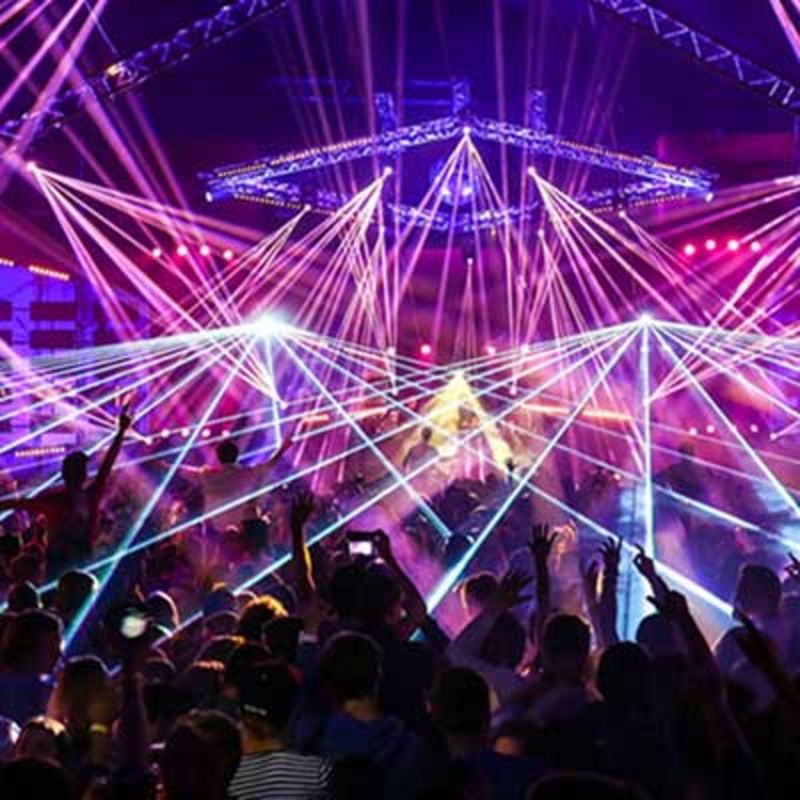Light measurement applications
Overview
For some years now, so-called audience scanning laser shows have been used in show business, involving the public. This is accompanied by an increased risk of eye damage to the audience. Light meters help to minimize this risk and there are many more applications ...
Further information
Audience Scanning Laser Safety
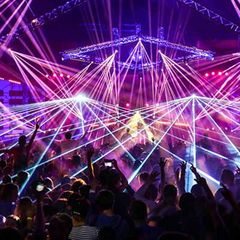
Ever since Justin Timberlake and Saturday Night Live rocked the entertainment world with the laser effect called “audience scanning”, use of this new technology has skyrocketed and so has the risk of eye damage to the audience.
Laser light measurement tools can rapidly measure and display the peak value of exposure for all colors of lasers without the need to change components or settings.
Audience scanning immerses the audience with light in many shapes and sizes (laser beams, cones, fans, waves, sheets, etc) so that the laser light is actually touching people. It is a truly immersive effect, that allows people to actually touch and interact with the light.
Laser lighting can be shined directly at the audience, reflect off natural and artificial structures in the environment, or focused on the stage and performer. Regardless of the directionality of the display, there is a risk for over exposure to the human eye.
EN 60825-1:2014 is the most robust regulations pertaining to safety systems and requires that all users are fully trained and all systems are tested for safety. The EN sets the MPE (Maximum permissible exposure) at the cornea for a collimated laser beam.
Endoscope and Fiber Optic Light System Testing
Endoscope and other fiber optic illuminator lighting systems were previously considered difficult to trouble shoot in the field, and were commonly sent out to certified laboratories for evaluation, repair, replacement or service. In many cases expensive components were simply swapped out for new parts when test equipment was too costly or unavailable.
Portable light measurement testing systems allow easy measurement of fiber optic lighting systems including endoscopes, laparoscopes, cystoscopes, microscope illuminators, spot curing sources and more. Along with testing the output of the fiber, light meters can also be configured for measurement of the light source directly.
Germicidal (UV Disinfection)
Germicidal radiometer systems allow the testing of effective germicidal ultraviolet irradiance for most short wave UV ("UV-C") sources including ozone producing and non-ozone producing, low and medium pressure mercury lamps, xenon lamps and UV LEDs.
UV light is sub-divided into 3 distinct UV wavelength ranges (ISO-21348):
UV-A: 315 nm - 400 nm
UV-B: 280 nm - 315 nm
UV-C: 100 nm - 280 nm
Use of ultraviolet light for germicidal UV light disinfection (typically UV-C) is a technology which can be applied to air, water and surfaces.
Ultraviolet Germicidal Irradiation (UVGI) rapidly replacing traditional disinfection methods
Germicidal disinfection by exposure to ultraviolet (UV) light is seeing rapid deployment in food, pharmaceutical, hospitality, and medical markets throughout the world due to the effectiveness, ease of use, adaptability and relatively low expense of the technology as compared with the more complex, time consuming and costly methods currently in use such as chemical, steam, or heat disinfection.
UV Light
UV irradiation kills a broad range of microbes, in essence breaking the molecular bonds that hold the organism’s DNA together. The most effective wavelength for accomplishing this is 263 nanometers (nm). However the most commonly used light sources have peaks ranging from 250 nm to 285 nm with both narrow band and broadband outputs.
Medium pressure UV lamps are typically utilized in applications requiring high intensity germicidal UV exposure where the large numbers of LED or Hg lamps required to meet the intensity levels would be impractical due to cost and space, such as in large volume municipal water treatment facilities.
Due to their lower cost, low pressure Mercury (Hg) lamps which emit about 93% of their output 254 nm have traditionally been utilized in low to medium intensity germicidal applications such as food processing, low volume water treatment, and medical service and manufacturing.
Recent improvements in UV-LED flux density, stability and life hours have made UV-LEDs a viable solution for replacing traditional UV light sources such as mercury arc lamps, arch lamps, hot and cold cathode lamps and grid lamps. UV LEDs are more environmentally friendly as they do not contain harmful mercury, do not produce ozone and consume less energy.
Laser Power Measurement
The word laser is an acronym for light amplification by stimulated emission of radiation. Laser power meters are designed for simple laser power measurements in the visible and near IR that can be used even by non-technical personnel.
LED Measurement & Characterization Systems
Challenges of LED Measurement
LEDs are taking the lighting industry by storm. Applications requiring light output ranging from UV to NIR are replacing traditional light sources with LED technologies. Though LEDs have the advantages of increased efficiency, color specificity, size, response time and long lifetime, LEDs often struggle with repeatability in color temperature, spectrum, peak wavelength, and intensity. This makes the need for accurate, easy-to-use test and measurement equipment more important than ever.
Low Light Level
Low Light Level detection and measurement requires the use of a PMD sensor and highly sensitive light meter capable of measuring very low current or voltage levels. ILT combines a Hamamatsu PMD, miniature power supply, filters and optics into a compact housing that allows measurements as low as nlux and pW/cm² over the ranges of 250-780 nm.
Optical Radiation Hazard
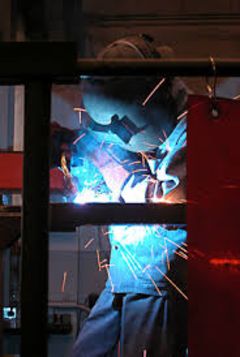
Sources emitting optical radiation are of paramount concern to hygienists, safety engineers, and public health officials, both from their beneficial effects and their potential as a hazard to health and safety. Our product offering in this area has expanded to include products for testing based on EU Directive 2006/25/EC.
Many common light sources can produce various damaging health conditions.
Welding equipment, lasers, office copiers, air sterilizers, and infrared heat lamps are some of the more commonly encountered optical radiation hazards. While most people are familiar with the damaging effects of continued exposure to the sun or even of the dangers of short-term exposure to welding equipment, many people are not familiar with the more subtle, but equally damaging optical radiation hazards presented by some of these other sources.
Artificial UV light sources, useful for photo-etching, curing adhesives, paint and coatings, air, water sterilization, and controlled plant growth isn't visible to the human eye and can go undetected without realizing the damage that is being done until it is too late.
These artificial sources can have UV levels many more times that of the sun producing a risk for greater injury in less time. Although knowledge about optical radiation hazards from UV light sources may be more obvious, thanks in large part to the sun and all of its publicity, the hazards presented by infrared and blue sources are just as real but far less known.
Lasers, found in almost every home or office in the shape of CD drives, DVD players, cutting equipment, measurement devices, indicators, and as research tools can focus tremendous amounts of optical energy into a tiny spot capable of tremendous amount of damage to the human eye or skin.
Even the smaller, less focused beams caused by scattering pose potential hazards. Some of the harmful effects which can be produced by these types of sources as well as others can include erythema (skin redness), photokeratosis (inflammation of the cornea more commonly referred to as "snow blindness"), skin cancer, Vitiligo (de-pigmentation of the skin), conjunctivitis, and temporary or permanent loss of vision. Continuous or repetitive exposure to low level sources may produce cumulative damage such as cataracts, blindness and cancer.
Safety professionals must weigh the risks against the benefits.
While all these sources have great benefits, the risks are there and must carefully be accounted for and personnel protection assured. Industrial hygienists, safety engineers, and public health officials must weigh the factors of human health, safety, and well being against any benefits derived from such sources. As these sources have grown more commonplace, so too has the assessment of these hazards through direct measurement of their light output against national and/or international standards for acceptable levels of human exposure.
Photodynamic Therapy
Phototherapy is defined as the treatment of medical, psychological, or cosmetic conditions by exposure to light. Photodynamic Therapy or PDT is a specialized type of phototherapy for the treatment of cancers and, like some phototherapy treatments, uses photosensitizers, but in a different way.
Photosensitizers are chemicals that increase the sensitivity of an organism either locally or systemically to exposure to light.
In generalized phototherapy, the light source produces the desired effect directly with the photosensitizer increasing the efficiency but the treatment can be done with just the light source.
In Photodynamic Therapy the photosensitizer, which is a required component, reacts to exposure from the light source producing a byproduct that itself is highly reactive with the undesirable tissue cells and is the actual treatment.
Careful control of and exposure to the light source is critical for successful treatment
Photodynamic Therapy photosensitizers are specifically designed to be attracted to or absorbed by metabolically fast cells such as cancer cells and may be directly delivered to the treatment site, taken orally, or intravenously.
Once the photosensitizer has been delivered, the site is exposed to a specific spectral band of light causing a series of reactions in the photosensitzer resulting in the formation of singlet oxygen. The singlet oxygen is itself a very aggressive chemical species causing damage to certain biological cells. That damage is confined to areas where the photosensitizer is present and then exposed to the PDT light source.
In this respect, Photodynamic Therapy is a very selective form of treatment since the mobility of the photosensitizer can be varied by delivery method and specific cells can be targeted by the careful design of the photosensitizer compounds. Even if other tissues have attracted or absorbed the photosensitizer and will be effected by the reaction, their unwanted damage is avoided by precise exposure of the desired treatment site to the PDT light source.
Because of the high exposure precision required, lasers are often used due to their focused output and visible light output, which is the predominant portion of the spectrum used in PDT treatments. However, if a wavelength of light is required that is not producible from a laser or when a broader spectral output is needed, other types of light sources can be delivered to the treatment site with pinpoint accuracy via fiber optics.
Photodynamic Therapy light source measurement solutions
Monitoring the amount of exposure to a PDT light source is absolutely critical in preventing unwanted tissue damage to the patient while maintaining the desired efficacy.
Photometry
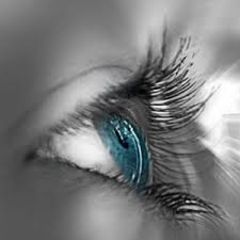
Unique human visual perception presents challenges in light measurement.
The visible light portion of the electromagnetic spectrum, sometimes called the optical spectrum, encompasses wavelengths approximately 400 nm to 700 nm containing most of the colors discernible to the human eye.
However, the human eye is not equally sensitive to all wavelengths of light, being most sensitive to green at 555 nm under normal lighting conditions then to other wavelengths.
Complicating attempts to measure human light perception is the individual variation in our ability to distinguish, describe, and reproduce color.
A summary of average human visual perception of light would be required if any method for measuring it or reproducing its color was to be developed.
Photoresist-Lithography

Photoresist is a chemical substance that becomes insoluble by exposure to ultraviolet light.
Photoresist is a light-sensitive chemical substance that is used to form a coating on a surface or substrate. This coating can then be exposed to a specific band of light, referred to as the photoresist’s action spectrum, to affect a desired change in the photoresist. This change causes the photoresist to either become soluble or insoluble to another chemical called the developer which will be washed over the photoresist.
Once developed, the photoresist that has been exposed to light in the action spectrum either remains or is washed away leaving a pattern that can then be used for further processing such as chemical etching, engraving, or lithography.
Photoresist sees widespread use in numerous technologies including micromachining.
Photoresist is extensively used in the printed circuit board industry where the patterns created by its use layout the circuit connections or traces of printed circuit boards through the use of etching chemicals.
Another heavy user of photoresist is the semiconductor industry, where it is a crucial step in the photolithographic production of micro-patterns that are used to form the tiny circuits of individual semiconductor devices.
Photoresists have also found use in Biomedical engineering, holography, and micromachining. The last application, micromachining, is a rapidly advancing arena in industrial technology.
Controlling the exposure of photoresists is critical to maintaining production
Many photoresist types exist to suit a large variety of applications, and the action spectra can vary from one to the next. It is critical to control the action spectra exposure settings, both the intensity of the light and the time of exposure, to avoid wasteful under or overexposure of the photoresist during processing and production.
Photostability light measurements
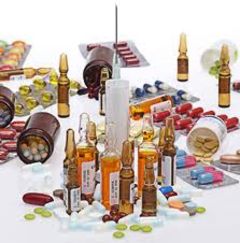
Photostability Testing
Photostability testing is typically done under controlled conditions, often in a sealed chamber where exact exposure levels to the spectra of light a product is likely to encounter, can be delivered for precise analysis of the effects.
The light levels used in photostability testing are generally high enough to accelerate hours, days, weeks, months, or even years worth of light exposure down to seconds, minutes, or hours in the testing chamber.
Monitoring of the exposure levels is critical and is either done by built-in measurement equipment within the chamber or by external instrumentation. This type of exact, accelerated, laboratory-level photostability testing is typical for the pharmaceutical, paint, ink, and dye manufacturing industries among others.
Visible light and UVA are the prime spectra of concern due to the abundance of both types in sunlight and typical indoor lighting which are the most likely light sources to be encountered by these photo-sensitive products when in use or in-situ.
Similar testing can also be used in the preservation of delicate objects such as museum artwork where the photo-sensitive inks and pigments used will degrade with exposure to light, causing costly or even irreparable damage. In these cases the exposure of the object to any light source is not desirable, but unfortunately necessary for viewing, and so must be carefully monitored and controlled to prevent damage.
Measurement of the light source exposure levels on the object is crucial in developing and maintaining protective measures to combat photodegradation such as UV blocking windows and films, visible light reduction filters, and scheduled viewing light programs.
Forced Degradation Testing
Forced Degradation is a degradation study of new drug substance, drug product and/or drug packaging under more extreme conditions than the normal environment would provide. Forced degradation studies provide a greater understanding of the chemical behavior of the molecule, insight into degradation pathways, and a means to monitor and improve the development of formulations and packaging. ILT offers a variety of light measurement tools to allow continuous monitoring of lighting conditions during forced degradation studies for pharmaceutical applications as well as photostability testing for textiles, fabrics and plastics.
Photostability / Photodegradation Light Measurement Solutions
As concern grows about the negative effects of light exposure on photo-sensitive objects and substances, so too does the demand for highly accurate and repeatable measurements.
International Light Technologies offers a line of accurate and economical light measurement instrumentation designed for the most demanding Photostability / Forced Degradation applications.
Phototherapy
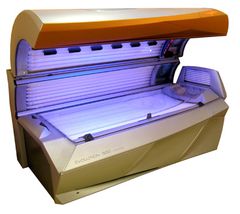
Even in ancient times, light was found to be an effective medical treatment
Light provides many benefits to man, not the least of which are energy, heat, and food but it has long been known to have many medicinal qualities as well.
Phototherapy, also known as light therapy, is treatment by application of either broad-spectrum or a specific waveband of light, and has its roots in antiquity.
The first deliberate use of light as a form of medical treatment can be traced back around 1400 BC to India where sufferers of vitiligo, a skin condition causing loss of pigmentation, were successfully treated with exposure to sunlight after certain plant extracts were administered that contained skin photosensitizing compounds. These compounds, called psoralens, made their exposure to UVA more effective at re-pigmentation.
The ancients didn’t know why it worked, but they knew it worked. Over the centuries since, scientific research has taken these first simple beginnings and transformed them into sophisticated forms of widely accepted treatments for numerous medical, psychological, and cosmetic conditions.
Phototherapy has many benefits but requires careful control.
Phototherapy has given practitioners and patients new options for the treatment of difficult chronic disorders and problematic conditions such as dermatitis, psoriasis, common acne, eczema, and seasonal affective disorder as well as vitiligo, neonatal jaundice, delayed sleep-phase syndrome, polymorphous light eruption, and mycosis fungoides among others.
In many cases, phototherapy treatments have been found to be as or more effective than traditional procedures while less expensive and typically faster. The demands of a busy world have given way to more powerful phototherapy treatments, particularly narrowband UVB systems, capable of delivering the required exposure in the shortest amount of time, making phototherapy an even more convenient treatment option.
With decreased exposure times and fewer required visits, these treatments are more convenient than ever and can now fit around a patients schedule or even done by the patient themselves in their own home, office, or car due to advances in smaller, safer, and easier to use portable and home-use phototherapy light sources.
However, with these benefits come certain considerations, while ultraviolet light (UVA and UVB), infrared (IR), and even blue or red visible light have all been shown to be effective at treating many conditions, also pose certain health risks due to the potential damage to the skin or eyes from over exposure, making it critical to monitor both the wavelength of light and the amount of exposure given to a patient.
Plant Photobiology
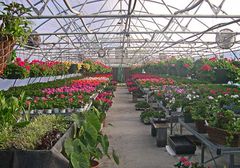
Accurate Measurement of Light is PAR for the Course!
The interaction of light and plant growth (photobiology) is a complex science involving various pigments within the plant such as chlorophyll, carotenes and xanthophylls that transmit, reflect or absorb energy from certain wavelengths that are then used to maximize the photosynthesis process.
However, photosynthesis is not the only consideration when producing a plant for profit. Other aspects like shape, biomass, flowering, coloration, taste, smell, root development and medicinal benefits, etc. are often equally important.
It is well known that there is great variation in light spectrum and intensity requirements among species and desired affects (stem growth, seed germination,leaf growth, fruit bearing, flowering, etc).
Photoreceptors for photosynthesis are most efficient in the blue (400-500 nm) and red (600-700 nm) area of the spectrum. Far-red, (700–800 nm) is critical for flowering of many plants. The (500–600 nm) green area is less understood and even though much of this range is reflected, it is considered beneficial for carotenoids and lycopene (for color and photo-protection).
UV (UVB: 280-315 nm and UVA: 315-400 nm) radiation is important in inducing production of phenolics, anthocyanins (coloration), antioxidants and vitamins that inhibit mold growth.
Thus the full spectrum from about 350–780 nm at a suitable light intensity can be considered beneficial in plant cultivation. A proper ratio between red and blue light complemented with the correct proportions of far-red and green light and small doses of UV are most often the best mix. The key is to understand and supply the correct spectrum and intensity during the appropriate stage of growth that is optimally suited for the task at hand.
Radiometry
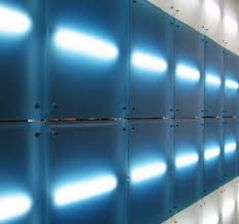
Radiometry is the detection and measurement of the electromagnetic spectrum (ultraviolet, visible, and infrared).
All light measurement is considered radiometry with photometry being a special subset of radiometry weighted for a typical human eye response.
Manipulating light for more accurate measurement
Light waves behave like all electromagnetic waves in that they interfere with each other, become directionally polarized, or bend when passing an edge. Because of these properties, light waves can be predictably manipulated for increased or decreased amplitude or even filtered by wavelength or a band of wavelengths by means of various filters, mirrors, lenses, prisms, gratings, and other input optics.
These principals make it feasible to tailor a light detector to match a particular application.
In most cases, when making radiometric measurements with silicon photodiodes, a flat spectral response filter is used to even out the detector's innate sensitivity to the red portion of the spectrum versus the blue. This flat response allows the detector to accurately measure light at one wavelength versus another. This is particularly useful if the spectral output of the light source is unknown or likely to vary with operating conditions or application requirements.
In the event that a particular section of the output from a light source needs to be isolated, a detector with a narrower response can be used, or a band pass filter can be placed on a broad response detector to tailor it’s response to measure just the required portion of light. Narrow band filters can also be used to isolate a very narrow portion of light such as that of a specific mercury emission line.
Solar Radiation

The sun and solar simulators have a broad output ranging from UVB into the IR.
The sun and solar simulators have a broad output ranging from UVB into the IR. The bands of interest include UVB, UV-Vis and NIR.
UVB is a band of ultraviolet radiation with wavelengths from 280-315 nanometers produced by the Sun. UVB refers to a specific portion of the sun’s energy reaching the earth’s surface.
This type of radiation accounts for only a small portion of the electromagnetic spectrum, but it has an unusually large photo-biological effect. Both plants and animals are affected by increases in UVB radiation.
UV radiation plays a role in the degradation of all polymeric materials as well as biological systems. It also acts as a germicide, a fungicide, and a bactericide in agriculture and biological systems.
UVB radiation is responsible for a wide range of damaging human and animal health effects, primarily related to the skin (skin cancers), eyes (cataracts), and the immune system. Possible eye damage can result from high doses of UV light, particularly to the cornea which easily absorbs UV light.
UVA/Vis, though much less hazardous, also contributes to degradation and skin and eye hazard.
Another contributor is the infrared (IR). IR is known to cause serious damage to the eyes, in particular the retina and the cornea.
UV Curing
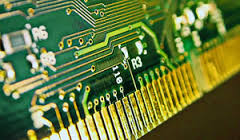
Curing a product with exposure to UV light, while fast and economical, requires careful control of the exposure process such as the spectral output of the light source, intensity levels, and exposure times of the products.
Navigation
Categories
Contact
Quantum Design
Str Ion Nistor 4, et 1, M2E
030041 Bucharest
Romania
| Phone: | +40 755039900 |
| Fax: | +40 317107156 |
| E-mail: | romaniaqd-europe.com |

